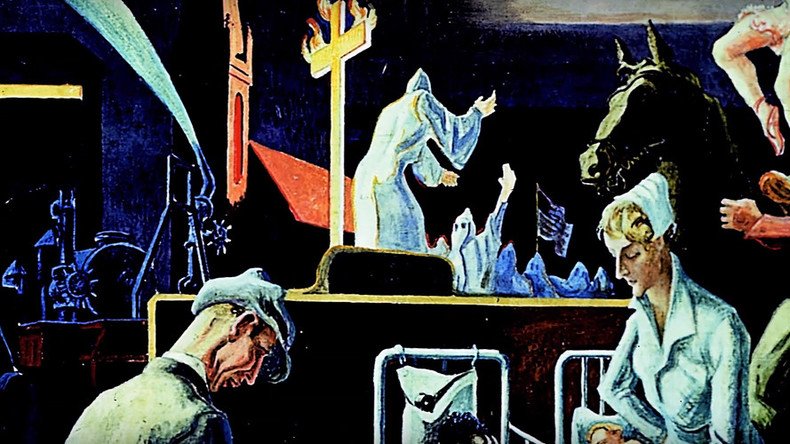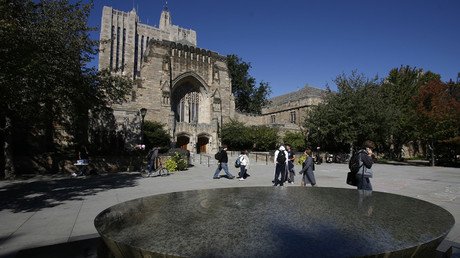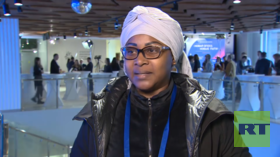Klan cover-up? Indiana University students call for removal of mural depicting KKK

Over 1,600 Indiana University students have signed a petition seeking the removal of a panel depicting KKK members in the university’s largest lecture hall, even though it is a tribute to Pulitzer prize-winning reports against the Klan.
“It is past time that Indiana University take a stand and denounce hate and intolerance in Indiana and on IU’s campus,” read the petition signed by over 1,600 students.
The petition argues that exposing students and faculty of color to the image of the Ku Klux Klan stands in violation of the school’s diversity policy and the student right to freedom from discrimination.
For now the school has stopped holding classes in the hall with the panel. University officials have spoken up for the artwork, arguing that the artist was drawing attention to the evils of the Klan.
No classes in room where KKK mural hangs at IUhttps://t.co/cCUmWmoI8p
— Kara Kenney (@KaraKenney6) September 29, 2017
Painted by Thomas Hart Benton, the panel depicts several hooded Klansmen alongside a reporter, photographer, and printer - a reference to the 1928 Pulitzer-prize winning story that uncovered the KKK’s ties to the government and broke the Klan’s political influence over Indiana.
The petition acknowledges that Benton intended to denounce the Klan, but argues the KKK is still active in the state today.
“These are in fact modern depictions and not just depictions of a historical time in Indiana,” says the petition, which calls for classroom housing the artwork “an environment that promotes a group known for discriminating against people of color, homosexuals, non Christians, and various other marginalized groups of people.”
The mural was painted over 80 years ago, commissioned by the state legislature to create the mural for the Indiana Hall at the “Century of Progress” exposition at the 1933 World’s Fair in Chicago. The murals were donated to Indiana University in 1940 and installed in three buildings on campus the following year.
IU auditorium for freshman orientation. Thomas Benton Hart mural with KKK in background. pic.twitter.com/TRGv7YtkAP
— S.E.B. MD (@ircrc) July 8, 2013
“Like most great art, Benton’s murals require context and history,” Lauren Robel, the school’s executive vice president and provost, said in a statement.“Many well-meaning people, without having the opportunity to do that work, wrongly condemn the mural as racist simply because it depicts a racist organization and a hateful symbol.”
Benton’s mural features the social and industrial history of Indiana, from early Native American inhabitants to modern reform movements and mechanization, and includes the ugly side of that history as well, such as lynchings and a slave auction.
“Covering the murals feels like censorship and runs counter to the expressed intent of the artist to make visible moments in history that some would rather forget,” said Robel.
The murals have been the topic of debate at the university before. In 2002, a committee decided to keep the Benton murals but demand the faculty show a video to their classes explaining the history of the panel. The practice was apparently discontinued several years ago. Any context for the work was limited to two posters now displayed outside the classroom.
At a meeting about the panel on October 28, former IU vice president Charlie Nelms, who was on the committee in 2002, told the audience that he was frustrated because most of the people taking a position on the mural had only heard stories of the Klan. Nelms, an African American, said he had first-hand experience with the group growing up.
“I took the position then, and I take the position now, to keep the mural because the Klan is part of the history of Indiana, and we dare not cover that up,” said Nelms, according to the Indiana Daily Student.













